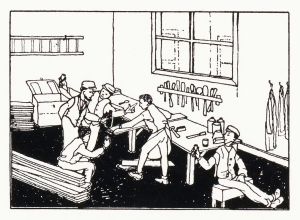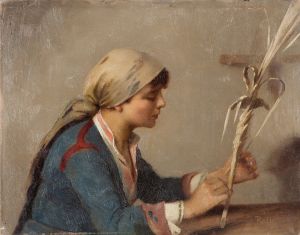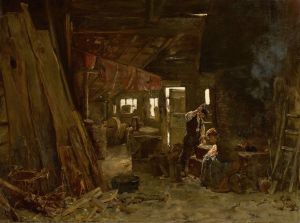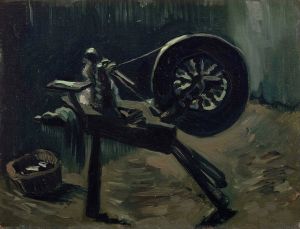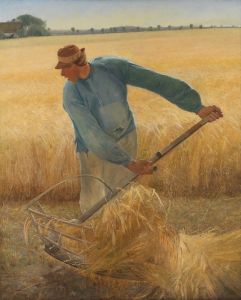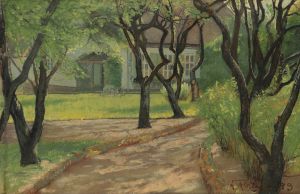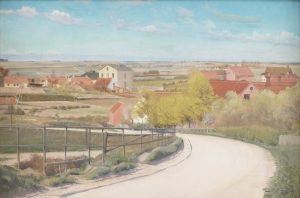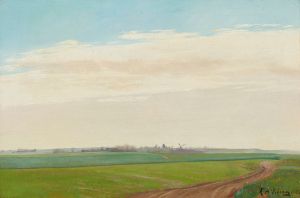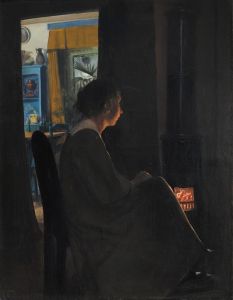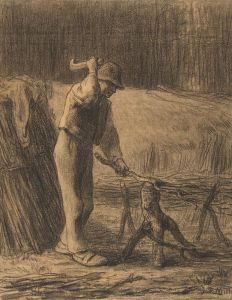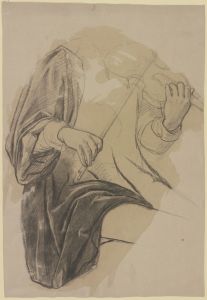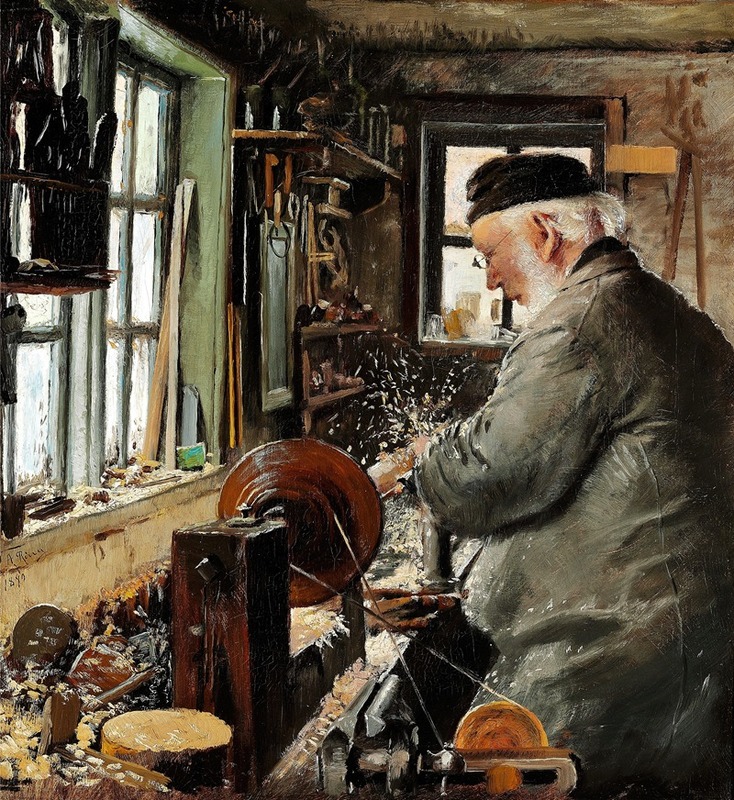
En Drejer ved sin Drejebænk
A hand-painted replica of Laurits Andersen Ring’s masterpiece En Drejer ved sin Drejebænk, meticulously crafted by professional artists to capture the true essence of the original. Each piece is created with museum-quality canvas and rare mineral pigments, carefully painted by experienced artists with delicate brushstrokes and rich, layered colors to perfectly recreate the texture of the original artwork. Unlike machine-printed reproductions, this hand-painted version brings the painting to life, infused with the artist’s emotions and skill in every stroke. Whether for personal collection or home decoration, it instantly elevates the artistic atmosphere of any space.
Laurits Andersen Ring, a prominent Danish painter, created the artwork "En Drejer ved sin Drejebænk" (A Turner at His Lathe) in 1885. This painting is a significant example of Ring's work during a period when he was deeply engaged with themes of rural life and the everyday experiences of the working class. Ring is often associated with the Symbolist movement and is known for his ability to infuse ordinary scenes with a sense of deeper meaning and introspection.
"En Drejer ved sin Drejebænk" depicts a craftsman, specifically a turner, at work in his workshop. The painting captures the essence of manual labor and the quiet dignity of the artisan's life. Ring's attention to detail is evident in the meticulous rendering of the lathe and the various tools scattered around the workshop. The composition is carefully balanced, with the turner positioned slightly off-center, drawing the viewer's eye to the focused expression on his face as he engages with his craft.
The use of light in the painting is particularly noteworthy. Ring employs natural light to highlight the textures of the wood and the turner's clothing, creating a warm and inviting atmosphere. This technique not only enhances the realism of the scene but also underscores the connection between the artisan and his environment. The subtle interplay of light and shadow adds depth to the composition, inviting viewers to linger and explore the details of the workshop.
Ring's choice of subject matter reflects his interest in the lives of ordinary people and his commitment to portraying them with respect and empathy. During the late 19th century, Denmark was undergoing significant social and economic changes, and Ring's work often captured the tension between tradition and modernity. By focusing on a turner at his lathe, Ring highlights the enduring value of craftsmanship and the importance of preserving traditional skills in the face of industrialization.
The painting is also indicative of Ring's broader artistic style, which combines elements of realism with a subtle symbolic undertone. While the scene is grounded in reality, there is an underlying sense of contemplation and introspection, inviting viewers to reflect on the nature of work and the passage of time. This duality is a hallmark of Ring's work, allowing his paintings to resonate on multiple levels.
"En Drejer ved sin Drejebænk" is part of Ring's larger body of work that often explores themes of rural life, labor, and the changing landscape of Denmark. His paintings are celebrated for their technical skill, emotional depth, and ability to capture the spirit of an era. Today, Ring is regarded as one of Denmark's most important painters, and his works continue to be studied and appreciated for their artistic and historical significance.
In summary, Laurits Andersen Ring's "En Drejer ved sin Drejebænk" is a masterful depiction of a craftsman at work, reflecting the artist's deep engagement with themes of labor, tradition, and the human condition. Through his skillful use of light, composition, and subject matter, Ring creates a painting that is both a realistic portrayal of a turner's workshop and a meditation on the enduring value of craftsmanship in a rapidly changing world.






